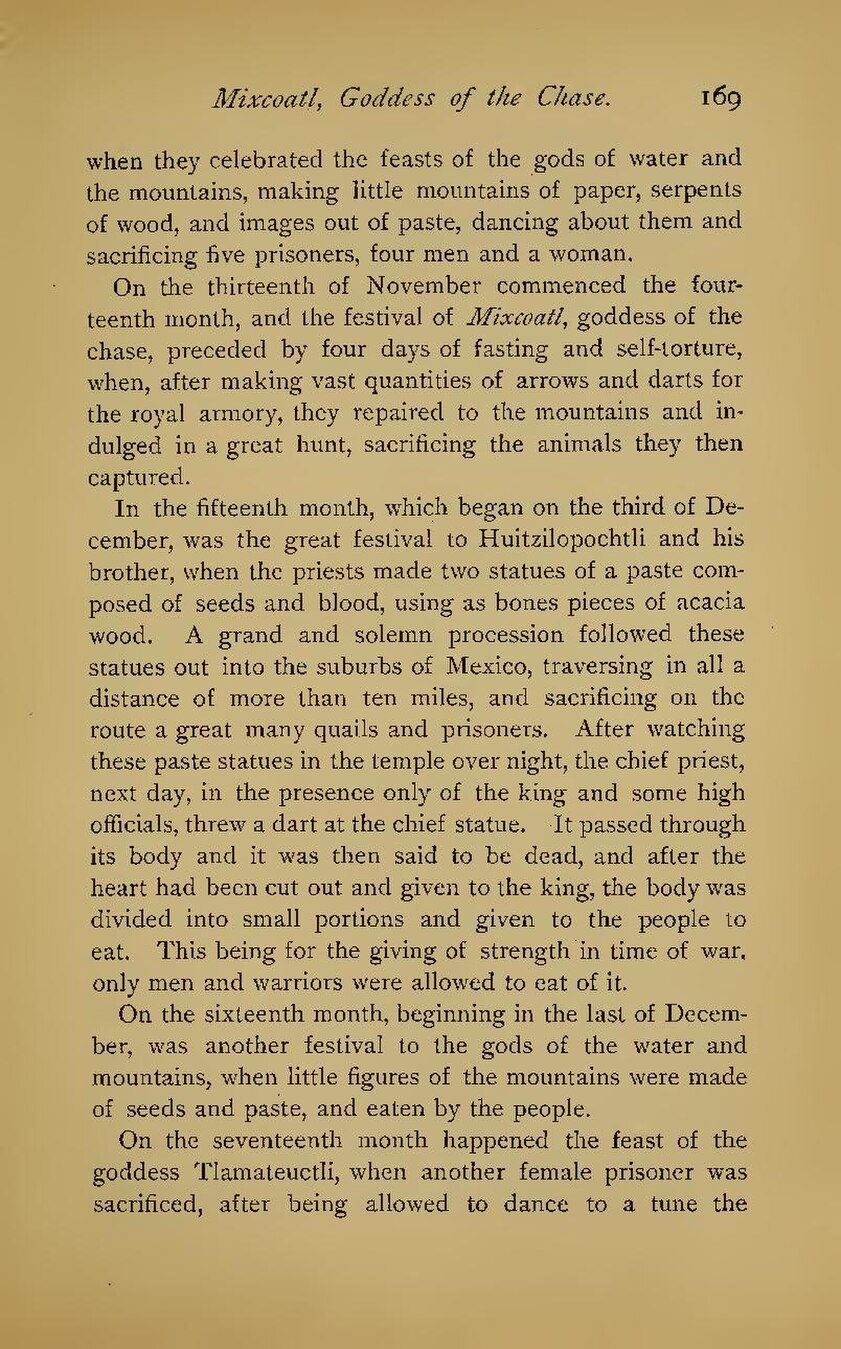when they celebrated the feasts of the gods of water and the mountains, making little mountains of paper, serpents of wood, and images out of paste, dancing about them and sacrificing five prisoners, four men and a woman.
On the thirteenth of November commenced the fourteenth month, and the festival of Mixcoatl, goddess of the chase, preceded by four days of fasting and self-torture, when, after making vast quantities of arrows and darts for the royal armory, they repaired to the mountains and indulged in a great hunt, sacrificing the animals they then captured.
In the fifteenth month, which began on the third of December, was the great festival to Huitzilopochtli and his brother, when the priests made two statues of a paste composed of seeds and blood, using as bones pieces of acacia wood. A grand and solemn procession followed these statues out into the suburbs of Mexico, traversing in all a distance of more than ten miles, and sacrificing on the route a great many quails and prisoners. After watching these paste statues in the temple over night, the chief priest, next day, in the presence only of the king and some high officials, threw a dart at the chief statue. It passed through its body and it was then said to be dead, and after the heart had been cut out and given to the king, the body was divided into small portions and given to the people to eat. This being for the giving of strength in time of war, only men and warriors were allowed to eat of it.
On the sixteenth month, beginning in the last of December, was another festival to the gods of the water and mountains, when little figures of the mountains were made of seeds and paste, and eaten by the people.
On the seventeenth month happened the feast of the goddess Tlamateuctli, when another female prisoner was sacrificed, after being allowed to dance to a tune the
